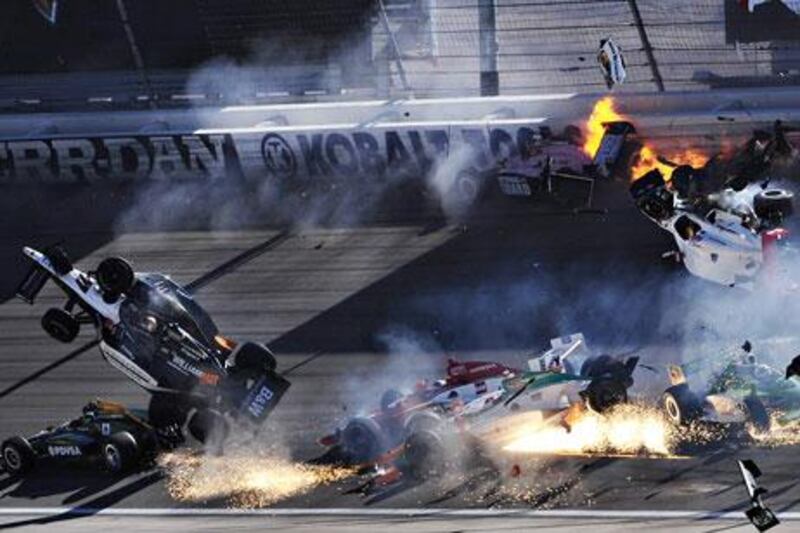Dan Wheldon's death in a horrific accident at the Las Vegas Indy 300 was tragic. It was also inevitable.
Fatal crashes, such as the one that took the life of the talented English driver at the age of 33, will continue as long as this extreme form of motorsport exists.
The tremendous speed at which the cars travel, while separated by inches on those steep oval tracks, means you will likely see more deaths, no matter what safety measures are implemented. Indy Racing League officials have taken steps in an effort to prevent this kind of tragedy, but too many deaths have occurred in this form of racing.
Tony Renna, in 2003, and then Paul Dana, three years later, were killed as a result of accidents. Three deaths in eight years is a lot.
But short of banning the sport, I'm not sure what can be done to ensure this doesn't happen again.
What is the point in a safety barrier – built to absorb the impact of a car crashing into it at high speed – when that car flies through the air, clears said barrier, hits the fence and then is propelled back into the field?
The cars are going so fast that the slightest touch can send them clear off the track, and then who knows where they are going to land? It's not as if the driver has any control at that point.
If they wanted to completely take away the risk factor, if that was even possible, then the entire nature of the sport would need to change.
I can't see that happening.
What I do know is that the death of Wheldon is a tremendous blow for motorsport.
When news of the accident first appeared on Twitter, I immediately looked at the footage on YouTube, which made for distressing viewing. When I saw the flames and how many cars (15) were involved, I feared the worse.
Wheldon had been taken to hospital by that time, but soon a number of websites reported that he had died. In the hours after his death, I followed some of the tweets from fans and friends, many of whom claimed the Las Vegas track was notoriously dangerous, with its banks being even steeper than normal. That meant the cars were racing even closer than usual. I have no idea whether that is true, but it highlights that not enough is being done to ensure the safety of the drivers.
The accident also bought back a horrible memory for me. A great friend, the former IndyCar driver Kenny Brack, was involved in an almost identical accident in 2003 during a race in Texas.
His car was sent flying into the air by the one behind, violently hit a wall and then spun back into traffic, all at an incredible speed. Even now, I can hardly bear to watch the carnage. Somehow, Brack walked away from the crash relatively unscathed, although that was the beginning of the end for him in racing.
Brack had luck on his side that day. Wheldon was not so fortunate.
We all know the risks involved when any one of us sits down in whatever car we call our office. Those involved know the risks and are happy to take them. However, none of us think that the worst is going to happen.
Formula One has a history of fatalities but there are now so many safety measures in place in F1 that when someone does break a bone or is injured in any way - such as Felipe Massa at the Hungarian Grand Prix in 2009, when he was struck on the helmet by a spring from Rubens Barrichello's car - the sport is utterly stunned.
Not as stunned as we all are right now.
I knew Wheldon a little bit and kept a close eye on how he was doing over in the US, as he was a Brit, like me, and had enjoyed quite a bit of success. He had two young children and was married. My thoughts are with his family at this dreadful time.
Johnny Herbert is a former F1 driver with three career victories. His column was written with the assistance of staff writer Neil Cameron





